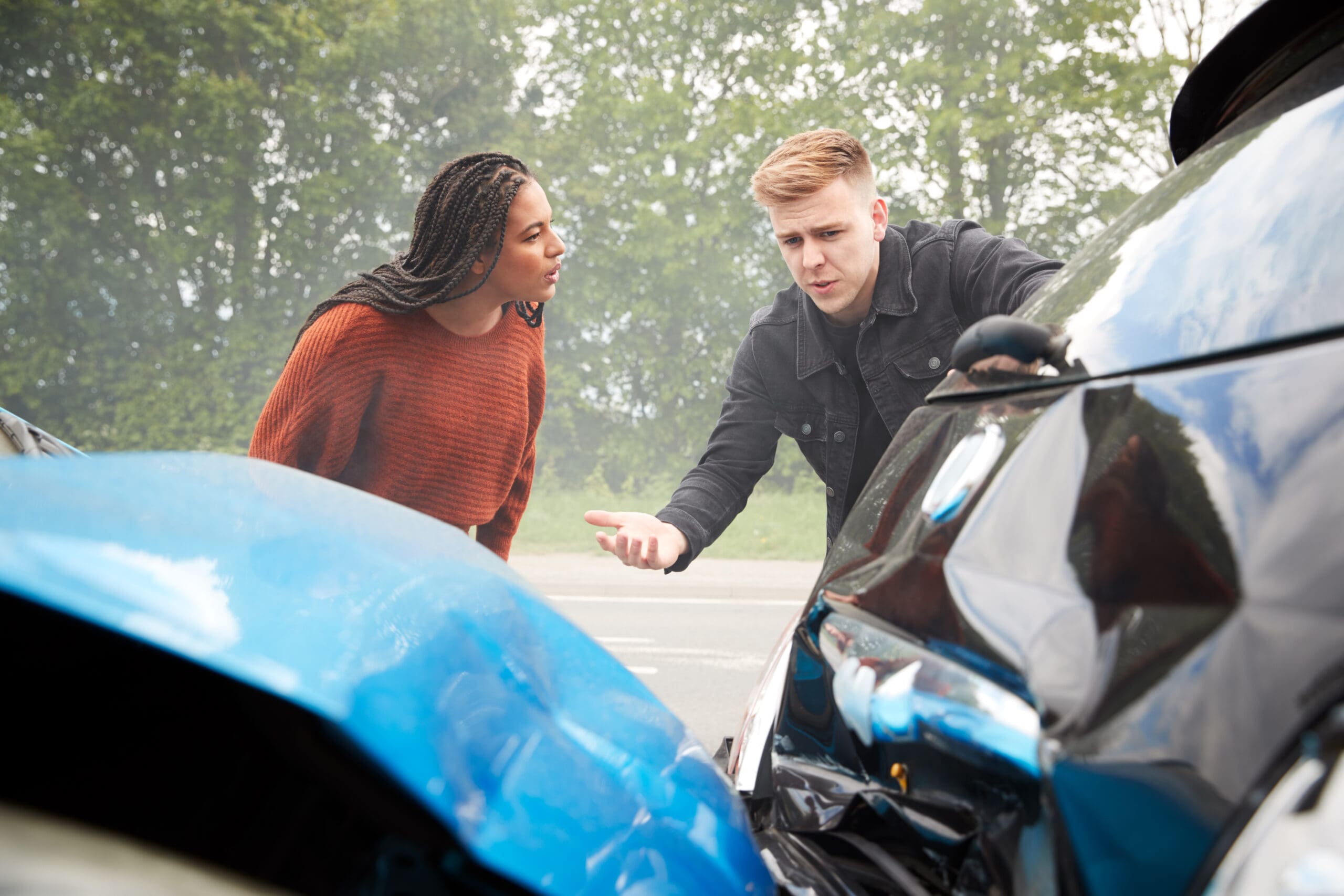Distracted Driving Safety Statistics Guide
Your road to recovery begins with a free, no-risk consultation. Call (404) 939-9470 today, or fill out the online form below.
"*" indicates required fields

Every time a driver takes their eyes off the road, they put everyone around them at risk. Distracted driving remains one of the most serious hazards on Georgia’s roads, resulting in thousands of injuries and fatalities each year.
Whether it’s texting, eating, reaching for an object, or adjusting the GPS, these distractions delay reaction times and impair critical decision-making. This often leads to severe consequences that many drivers underestimate.
Given these risks, understanding distracted driving is essential for your safety. In this guide, we’ll explore the latest distracted driving statistics, emerging trends, and effective prevention strategies. We’ll also cover how those affected by distracted driving crashes can protect their rights and seek justice.
What Is Distracted Driving?
Distracted driving occurs any time a driver’s attention is pulled away from safely operating a vehicle. It can be visual, manual, or cognitive. Often, it’s a combination of all three.
- Visual: Taking your eyes off the road (e.g., looking at a phone or billboard)
- Manual: Removing your hands from the wheel (e.g., eating, holding a device)
- Cognitive: Thinking about something other than driving (e.g., daydreaming, emotional stress)
Texting is often the most dangerous type of distracted driving, as it engages all three types. However, talking to passengers, adjusting controls, or even being lost in thought can also impair attention and increase crash risk.
Big Picture National Statistics (2023–2025)
Distracted driving is a serious public safety issue in the U.S. Even with more awareness and better car technology, crashes caused by distraction still lead to many deaths and injuries on the road.
These important distracted driving statistics reflect how serious this problem is across the country:
- In 2023, 3,275 people died in distraction-related crashes (Source). While this is a slight improvement from the 3,315 fatalities reported in 2022, it’s still a major issue.
- In 2023, approximately 324,819 people were injured in crashes due to driver distraction (Source). This translates to 9 deaths and 890 injuries per day.
- In 2022, distracted driving caused about 11 out of every 100 car crashes (Source).
- If distracted driving goes up by 10%, it could cost about $4 billion more every year. This includes money for emergency help, insurance, medical bills, and missed work.
These statistics represent the continued danger of distracted driving and how the right legal help can keep people safe.
Risk Factors: Behaviors & Demographics
Not all drivers face the same level of risk when it comes to distraction behind the wheel. Certain behaviors and demographic groups are disproportionately involved in distraction-related crashes. Understanding these risk factors helps inform better education, technology, and driver safety.
Texting While Driving
Texting remains one of the most dangerous distractions. According to a Virginia Tech study, texting while driving increases the risk of a crash by 23 times. This is because it involves visual, manual, and cognitive distraction, all at once.
Even reading a message or glancing at a notification for a few seconds can cause a driver to miss critical hazards on the road.
Teen Drivers
Young drivers are among the most vulnerable groups involved in distraction-related collisions. Teens and young adults aged 16 to 24 are involved in more fatal crashes caused by distraction than other groups. Their lack of driving experience and frequent phone use make driving more dangerous for them.
Generation Z: High Distraction Rates
Recent studies show Gen Z drivers are the most likely to use their phones while driving for texting, social media, and navigation. But they’re also more likely to use safety tools like “Do Not Disturb” while driving.
This means they get distracted often, but may be more open to using technology to help them drive safely.
Understanding who is most at risk can help shape better safety tools and public awareness efforts. It helps take steps toward reducing distracted driving crashes and saving lives.
Common Types of Distractions
Texting is one of the most well-known forms of distracted driving, but many other everyday actions can be just as dangerous. Distractions can come from inside or outside the car, and often seem harmless until they cause a crash.
Here are some of the most common causes of driver distraction:
Cell Phone Use
The most common and dangerous distraction is cell phone use. This includes texting, scrolling social media, video calls, and GPS navigation. Even hands-free devices can draw cognitive attention away from the road.
Other Common Distractions
Distractions don’t just come from phones. Everyday actions can quickly become dangerous behind the wheel:
- Eating and drinking: Grabbing food or drinks often requires drivers to remove at least one hand from the wheel.
- Grooming: Activities like applying makeup or fixing hair take focus off the road.
- Reaching or adjusting controls: Trying to grab an item or change music settings can quickly become dangerous.
- Passenger interaction: Loud conversations, arguments, or turning to look at passengers can lead to crashes.
Even brief distractions can lead to serious consequences, especially at higher speeds or in heavy traffic.
Emerging Trends & Interventions
Distracted driving remains a major threat, but smart technology and safer habits are starting to make a difference.
A recent AAA study found that using the “Do Not Disturb While Driving” feature on your phone can decrease handheld phone use by 41%. This tool silences notifications and sends automatic replies while you’re driving, helping you stay alert and focused.
In addition to these promising distracted driving statistics, more automakers are now adding similar features directly into their cars. This makes the feature harder to ignore and easier to use, helping drivers stay safe on the road.
Comparison: Distracted vs. Drunk Driving
Distracted driving is often overlooked, although it can be just as dangerous as driving under the influence. Studies and statistics show that talking on a cellphone while driving can slow your reaction time as much as having a blood alcohol concentration (BAC) of 0.08%, the legal limit.
The law treats drunk driving seriously, with strict penalties and widespread awareness campaigns. But distracted driving doesn’t always get the same level of attention, even though the consequences are just as devastating.
Victims of distraction-related crashes often face the same serious injuries, financial toll, and emotional trauma as those harmed in DUI accidents. An experienced car accident lawyer in Atlanta, GA, will help you secure justice following a distracted driving crash.
Preventive Measures & Best Practices
Reducing the number of alarming distracted driving statistics starts with awareness and making smart choices while behind the wheel. Here are practical steps drivers can take to stay focused and keep everyone safer on the road:
Tech-Based Solutions
- Turn on “Do Not Disturb While Driving” on your phone.
- Use hands-free devices or built-in voice controls.
- Set up navigation and music before you start driving.
Behavioral Habits
- Keep your phone out of reach while driving.
- Avoid eating, grooming, or doing other tasks behind the wheel.
- Ask passengers to handle calls or texts if needed.
Additionally, advances in technology, such as cameras, sensors, and artificial intelligence, help detect when a driver’s attention slips. These systems can alert drivers and are expected to become standard safety features in many vehicles to further reduce distracted driving risks.
Taking these preventive steps and embracing new technology can make a real difference in keeping roads safer for everyone.
Contact Our Legal Team if You’ve Been Injured in a Distracted Driving Crash
The latest distracted driving statistics show that distracted driving remains one of the deadliest risks on our roads. But with the right combination of technology, education, and legal support, many of these tragedies can be prevented or properly addressed.
At Graham Scofield Injury Lawyers, we understand how devastating distracted driving crashes can be. If you were injured because another driver wasn’t paying attention, we’re here to help you understand your rights and secure compensation for medical bills, lost wages, and pain and suffering.
With over 15 years of experience, our team handles serious motor vehicle accident cases, including:
Our team of Atlanta personal injury lawyers work on a contingency fee basis, so you don’t pay unless we win your case. Plus, clients get direct access to attorney Graham Scofield throughout the process.
If you or a loved one has been affected by distracted driving, you don’t have to face the aftermath alone. Contact Graham Scofield Injury Lawyers today to learn how we can help you seek justice and secure the compensation you deserve.




